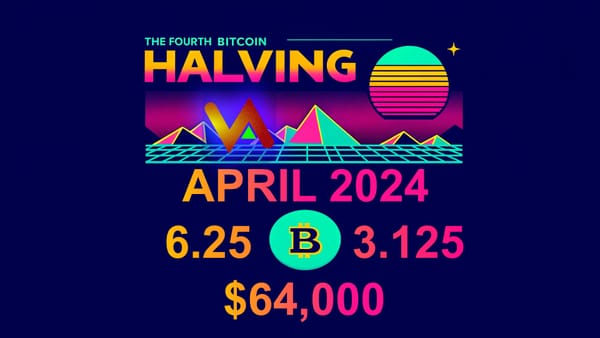
Bitcoin Completes Fourth Halving, Reducing Mining Rewards and New Supply
The Bitcoin network successfully completed its fourth halving event on Friday, April 19, 2024, at approximately 8:10 PM ET. This highly anticipated event occurs roughly every four years, or every 210,000 blocks, and has significant implications for the world's largest cryptocurrency by market capitalization.
Impact on Bitcoin Supply and Price
The halving event reduces the block reward for miners by 50%, effectively slowing down the issuance of new bitcoins. Before the halving, miners received 6.25 BTC per block, but now they will only receive 3.125 BTC. This reduction in daily mining rewards, from 900 to 450 BTC, has a profound impact on the supply of new bitcoins entering the market.
With the completion of the fourth halving, there are only 1.5 million BTC left to be mined until the 21 million cap is reached around the year 2140. This scarcity is a fundamental aspect of Bitcoin's design, ensuring that it remains a deflationary asset over time.
Historically, bitcoin's price has increased significantly in the 12-18 months following previous halvings. While past performance doesn't guarantee future results, many analysts and investors are closely watching the market for potential price appreciation. However, the near-term price impact remains uncertain, with macroeconomic factors and the growing demand for bitcoin ETFs acting as key drivers.
Halving Events and Bitcoin's Price
| Halving Event | Date | Reward Before Halving | Reward After Halving | Price Post-Halving |
|---|---|---|---|---|
| First | Nov 2012 | 50 BTC | 25 BTC | $1,000 |
| Second | July 2016 | 25 BTC | 12.5 BTC | $20,000 |
| Third | May 2020 | 12.5 BTC | 6.25 BTC | $69,000 |
| Fourth | April 2024 | 6.25 BTC | 3.125 BTC | $64,000 |
Effect on Bitcoin Mining Industry
The halving event has a significant impact on the bitcoin mining industry, as it cuts miner revenue in half, putting pressure on less efficient mining operations. Large public mining companies like Marathon Digital and Riot Platforms are better positioned to weather the impact due to their access to capital, more efficient equipment, and ability to scale their operations.
However, smaller miners may struggle with profitability in the wake of the halving. This could lead to sector consolidation, as less efficient operations are forced to shut down or merge with larger players. Some miners are also exploring a pivot to AI and other higher-margin opportunities to offset the reduced revenue from bitcoin mining.
Despite these challenges, the long-term outlook for the mining industry remains positive. As the supply of new bitcoins diminishes, the value of each bitcoin is expected to increase, potentially offsetting the reduced block rewards. Additionally, the increasing adoption of renewable energy in mining operations is helping to improve the industry's environmental sustainability and public perception.
Beyond the Halving
The fourth bitcoin halving marks a significant milestone in the cryptocurrency's history, demonstrating the resilience and predictability of its underlying protocol. While the immediate impact on price remains muted compared to previous halving events, the potential for long-term price appreciation remains as new supply diminishes.
However, the future of bitcoin's price will depend on various factors, including institutional demand, regulatory developments, and overall macroeconomic conditions. As the cryptocurrency market continues to mature, the role of bitcoin as a store of value and hedge against inflation is likely to become increasingly important.
For the mining industry, the halving event represents a challenge and an opportunity. While some less efficient operations may struggle in the short term, the industry as a whole is expected to adapt and evolve, with a focus on increasing efficiency, sustainability, and diversification.
As the Bitcoin network continues its journey towards the 21 million cap, the fourth halving serves as a reminder of the cryptocurrency's fundamental principles of scarcity, decentralization, and security. With each halving, Bitcoin takes another step towards establishing itself as a mature and stable asset class, poised for long-term growth and adoption.